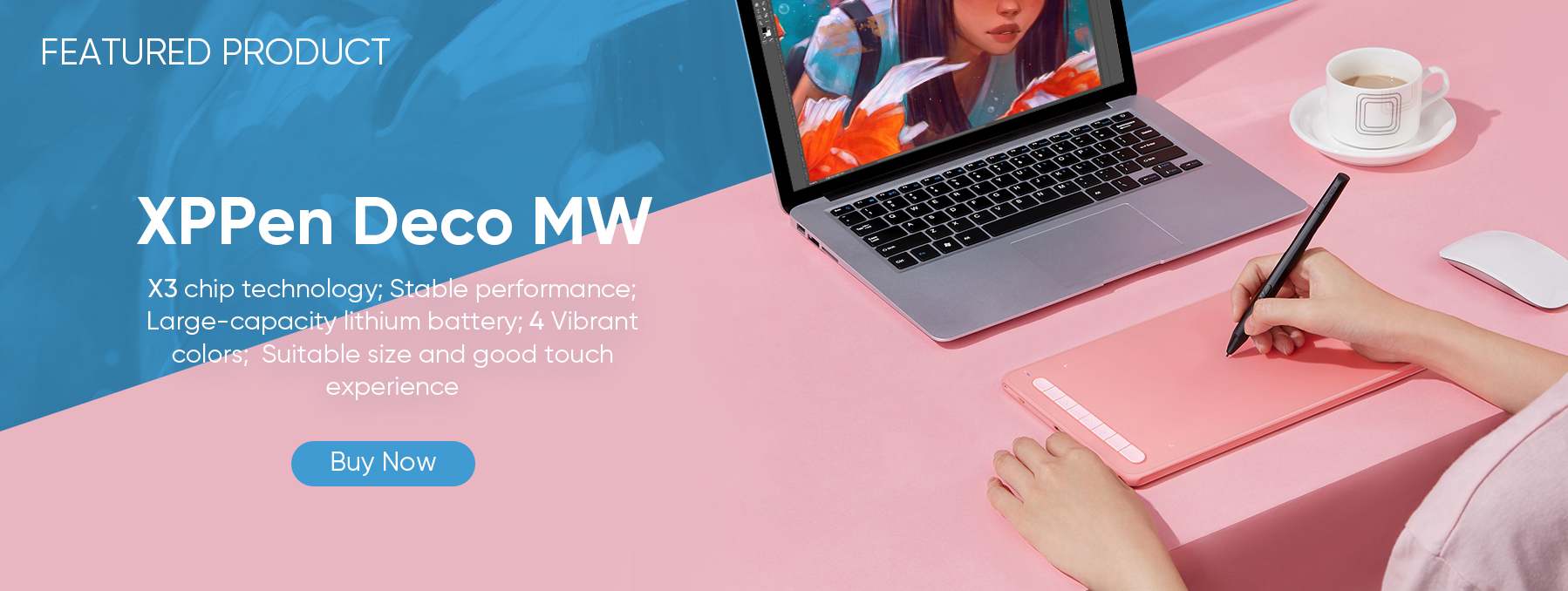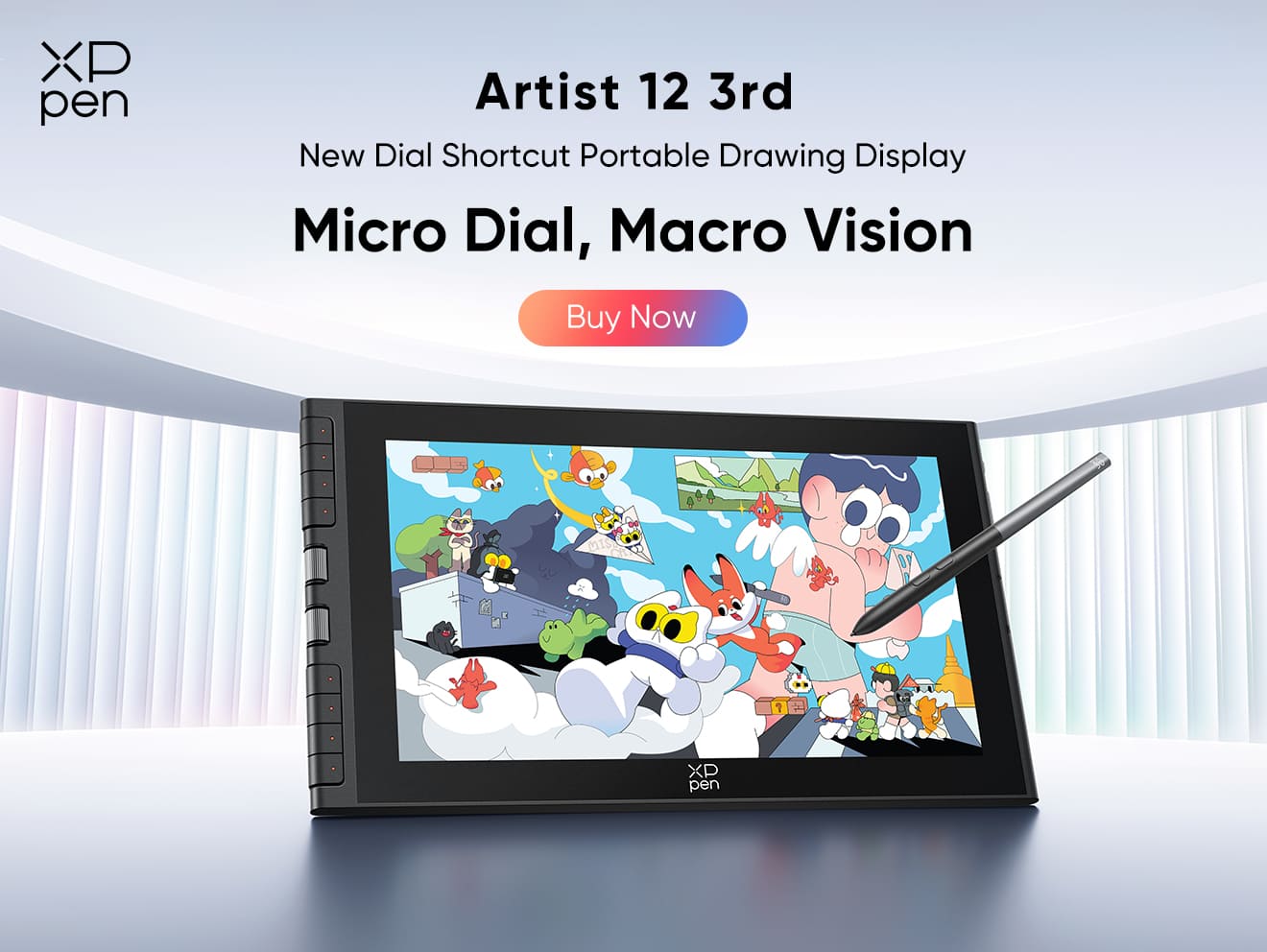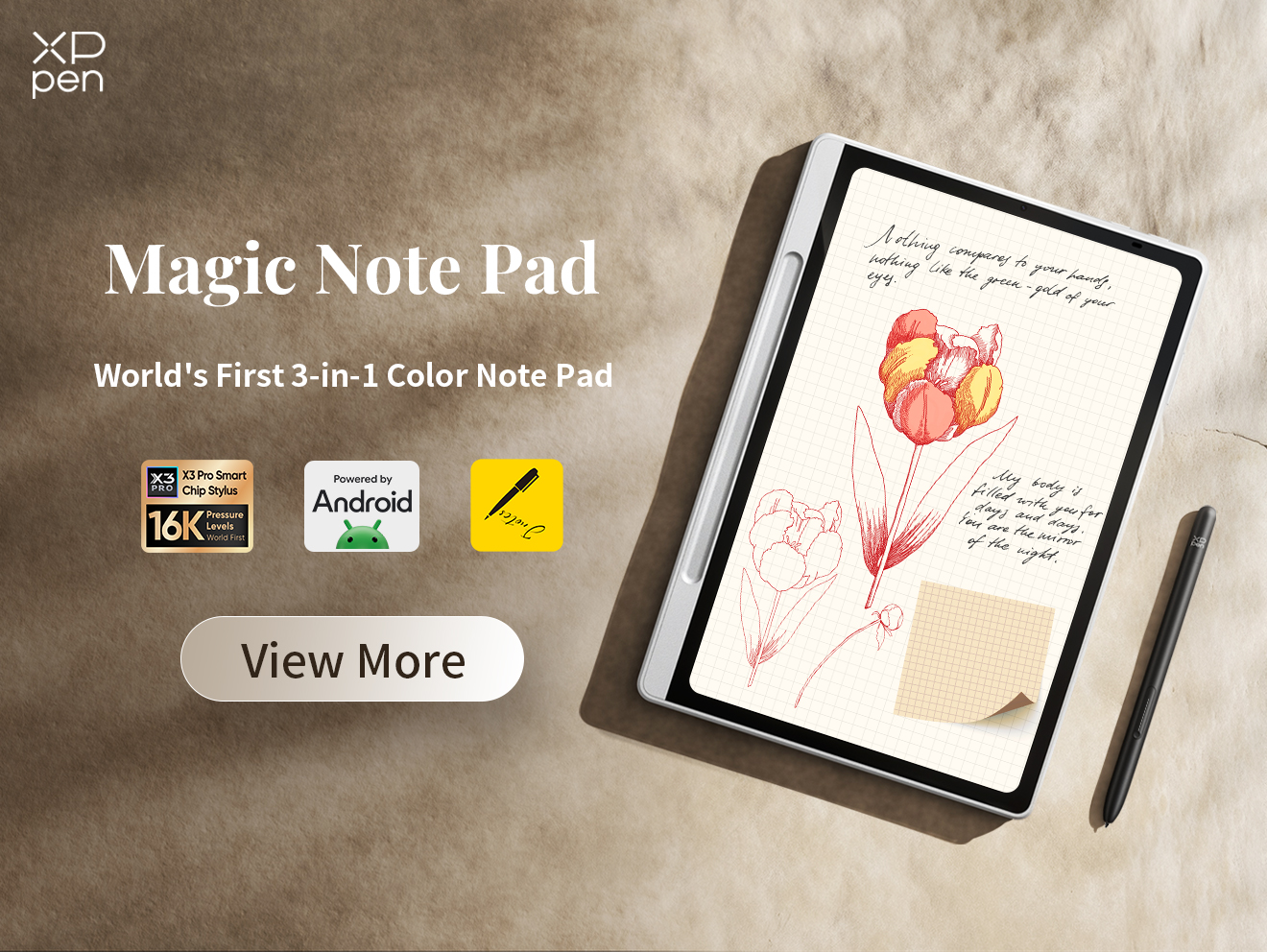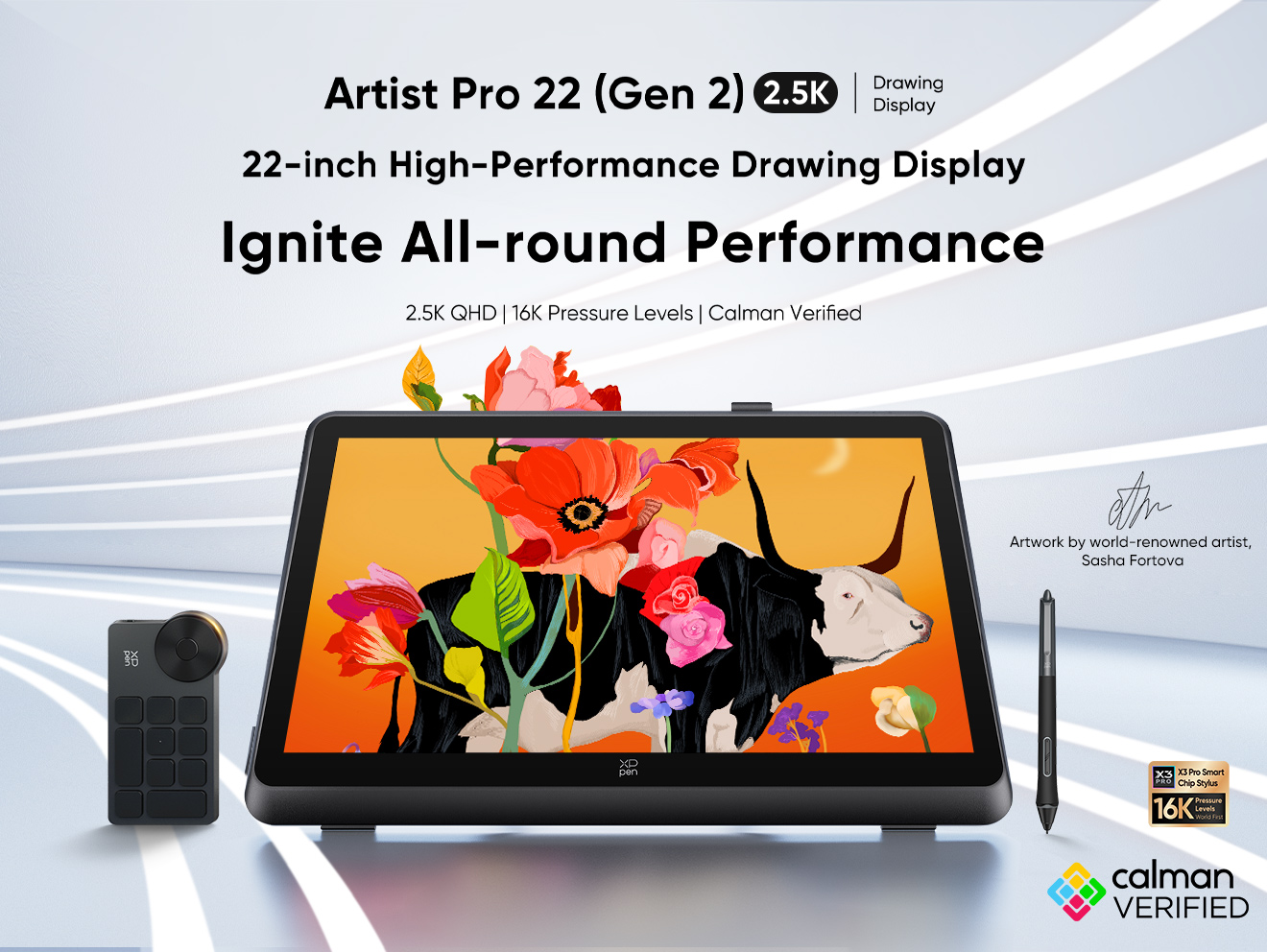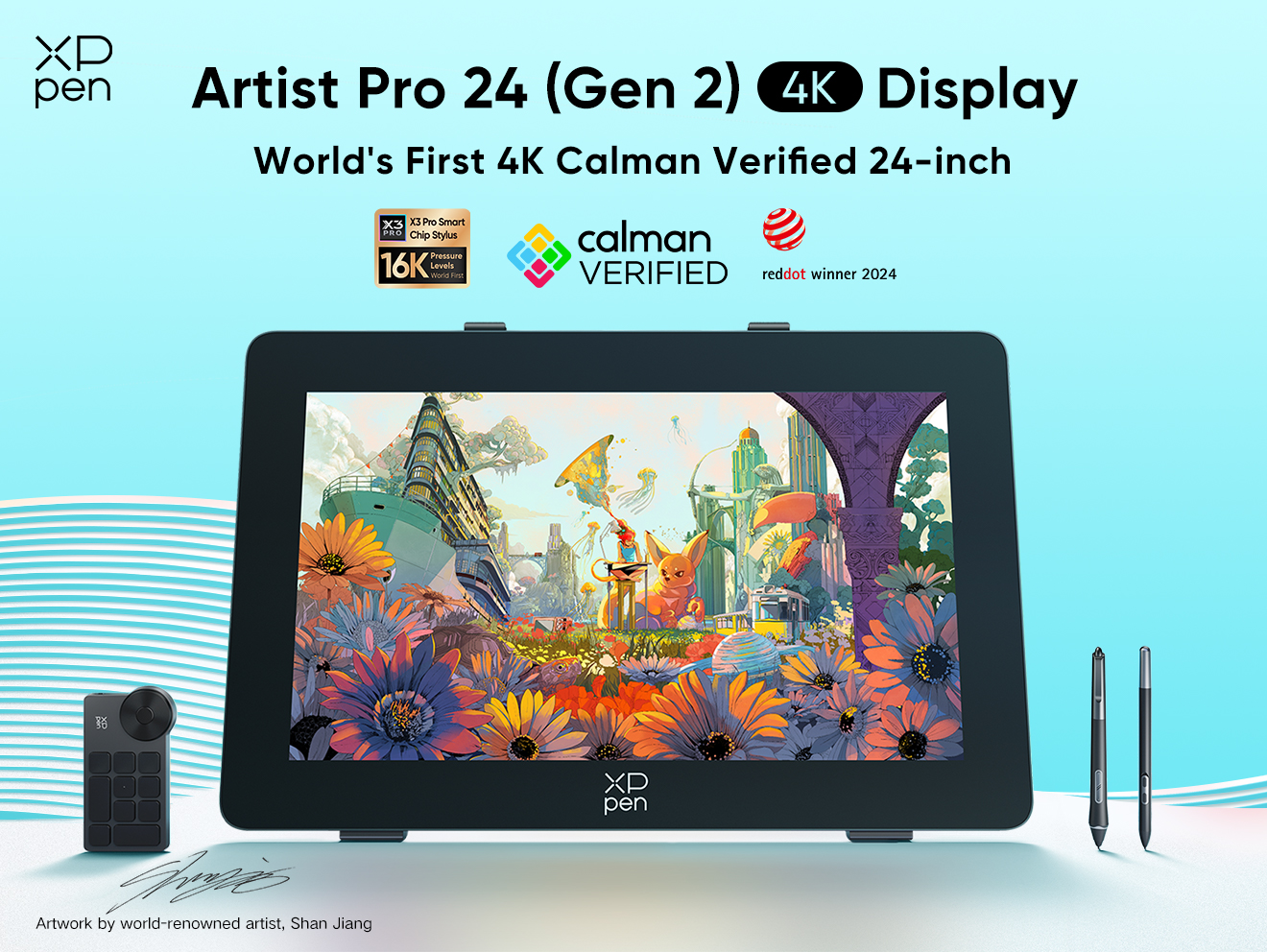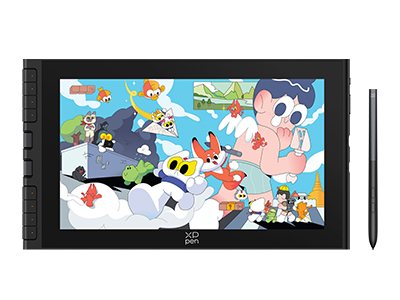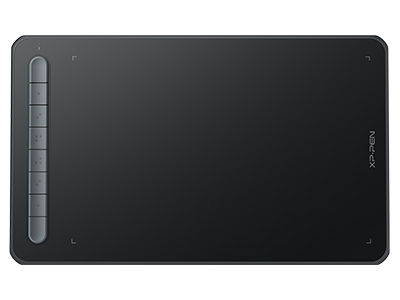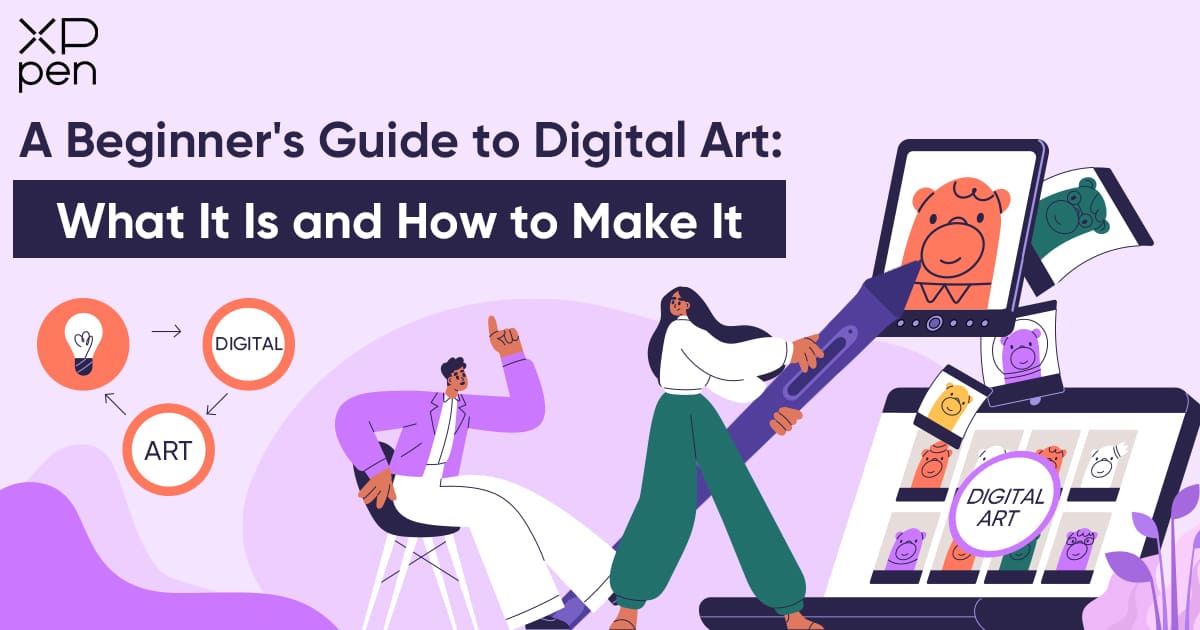
A Beginner's Guide to Digital Art: What It Is and How to Make It
BEGINNERDigital art has revolutionized the creative landscape, offering limitless possibilities for aspiring artists to express their imagination.
Whether you're a novice eager to dive into the world of digital illustrator or someone looking to enhance their skills, this guide will take you through every step of the journey.
From understanding the fundamentals to mastering advanced techniques, we've got you covered.
What is Digital Art?
Digital art is any form of visual art created using digital tools and technologies. It includes a wide variety of media, including photos, videos, sculptures, digital paintings, drawings, and illustrations. As long as they are created, enhanced, or displayed digitally, they can all be categorized as digital art.
It's a departure from traditional art mediums like canvas and paints, relying instead on digital devices such as tablets and computers, along with software designed specifically for creating art.
This modern approach offers digital art beginners unlimited undo options, easy experimentation, and a low-cost entry—making it forgiving, adaptable, and accessible compared to traditional art. It provides an easier barrier to entry that only encourages budding artists to explore digital art.
Exploring Different Forms of Digital Art
Digital art has various types that maximize technology and computer devices. Here are some of them:
Digital Painting: Creating artwork using digital brushes and tools, replicating traditional painting techniques.
Illustration: Designing visuals for books, magazines, or games using digital software.
3D Modeling: Crafting three-dimensional objects or characters using specialized software.
Graphic Design: Crafting visual content for branding, advertising, and online platforms.
Photo Manipulation: Altering photos to create imaginative or surreal scenes.
Pixel Art: Crafting images pixel by pixel, often seen in retro-style games.
Digital Sculpture: Crafting 3D sculptures using virtual tools and techniques.
2D Animation: Bringing images to life through movement and sequence, like cartoons, anime, or motion graphics.
Concept Art: Creating initial visual ideas for characters, environments, or scenes in media production.
How to Make Digital Art
Now that you understand what digital art is and have explored its various types, let's delve into the exciting process of creating your very own digital masterpiece.
In this section, we'll guide you through the essential steps–-from setting up your digital workspace to mastering foundational techniques. Whether you're a beginner or looking to refine your skills, this is where your creative journey truly takes flight.
Essential Tools and Equipment for Digital Art
To start your digital art journey without a hitch, you need to decide on a few things:
Choosing a Digital Device
First, select a tablet or computer that suits your budget and requirements.
You can start drawing on your computer without having to buy new devices. If you're considering standalone tablets like the iPad, they’re also a popular choice for digital drawing. With a drawing app and a stylus, you’re ready to dive in. However, considering the problem of using a standalone tablet for digital art drawing, a drawing pen tablet is the best option if you are focusing on drawing digitally.
Here are a pen display and a pen tablet that are suitable for beginners:
Deco MW Pen Tablet
The XPPen Deco MW presents an 8x5 inch pen tablet with customizable shortcut keys and an intuitive tablet driver. The stylus offers 8,192 levels of pressure sensitivity and tilt recognition. While the lightweight stylus lacks grip, it includes spare nibs and customizable side buttons. The tablet's drawing experience is smooth, and it offers wired and Bluetooth connectivity options. The XP-Pen Deco MW is an affordable and practical choice for entry-level digital artists seeking a reliable and user-friendly device.
Artist 12 3rd
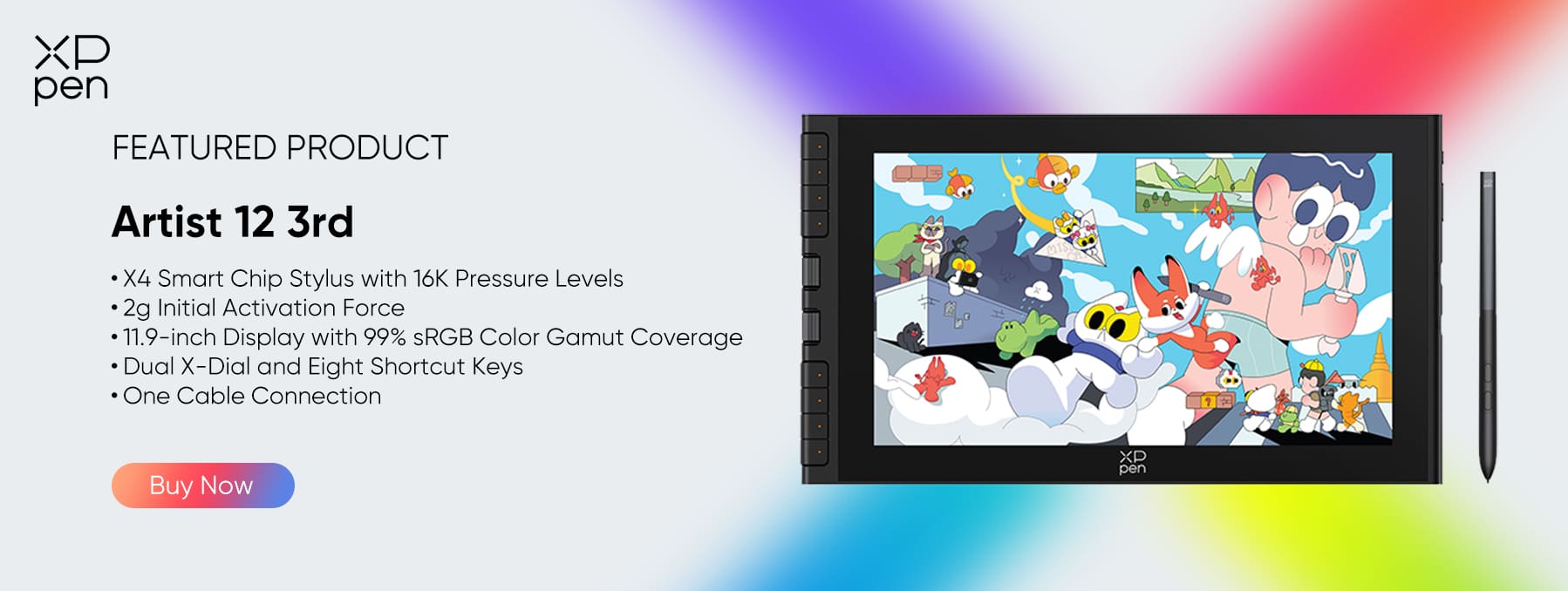
Unlike the Deco MW, the Artist 12 3rd is a drawing tablet with a screen, making it perfect for beginners. While it's aimed at beginners, its specifications are anything but ordinary. It features a 12-inch AG etched glass screen, giving you the feeling of drawing on paper.
It also comes with the newly released X4 Smart Chip Stylus, offering 16 pressure sensitivity levels and a faster response time. The new dual-touch wheel design and eight shortcut keys allow for quick adjustments to the canvas and brushes without the need for a separate keyboard.
16K Pressure Levels
2g Initial Activation Force
30ms Response Time
0.3mm Pen Tip Travel
Magnetic Storage
Check out these additional choices for the best drawing tablets with screen for beginners or the best drawing tablets for Adobe Photoshop and Illustrator.
Tip: If you're a beginner, you might find it a bit unfamiliar to use a pen display or tablet for your creative work. These tips for using a drawing tablet can assist you in adapting to your device more quickly and making the most out of it.
Exploring Various Artistic Software Applications
Selecting a user-friendly digital drawing software and practicing consistently can enhance your artistic skills. Each contender for the title of the best digital art software for beginners comes with its own learning curve. However, once you get the hang of one, transitioning to another becomes relatively easy. You just need to grasp concepts like layers, effects, opacity, and flow and you can practice your drawing skills more freely.
Exploring Free Software Alternatives for Beginners
Krita: If you're looking for a budget-friendly option to start with, consider Krita, a standout choice in the array of art software programs available.
GIMP: A free and open-source option that has improved significantly. It’s a versatile alternative to Photoshop but features a somewhat more complex user interface, suitable for image editing and digital art.
Inkscape: Great for vector-based illustration and graphic design.
Medibang Paint: User-friendly software for manga and comic creation, akin to Paint Tool SAI.
FireAlpaca: Simple interface and basic tools for easy sketching and painting.
Paid Drawing Software Digital illustration
Adobe Photoshop: Industry standard for image editing and digital painting. Offers subscription-based plans.
Corel PaintShop Pro: Emulates traditional painting techniques digitally. A well-reputed software.
Clip Studio Paint: Perfect for manga and comic creation, with dedicated features.
Affinity Designer and Photo: Affordable alternatives to Adobe software, with professional-grade tools.
Autodesk SketchBook: Offers a free version with advanced features available in the paid version.
Standalone Tablet Users
If you're using a standalone tablet (like an iPad or Galaxy Tab):
Procreate: Widely acclaimed for its natural feel and powerful tools (iOS only).
Clip Studio Paint EX: Offers a full version for iPads and Galaxy Tabs.
Autodesk SketchBook: Tailored for tablets and offers both free and paid versions.
However, many software options offer free trials for exploring. Finding the right software is crucial for enhancing your digital art journey, so take your time to evaluate and experiment with different options to find the perfect fit.
Digital Art Basics for Beginners
Before diving into complex creations, it’s recommended to explore the user guide of the software you've installed. Alternatively, seek out instructional videos for a quick grasp of the basics.
Plus, mastering these foundational techniques will lay a strong foundation for you:
Understand layers and layer modes: Learn to work with layers to organize elements and make edits without affecting the entire image.
Learn brushes and brush settings: Familiarize yourself with different brush types and settings to achieve different textures and strokes.
Study color palettes and color theory: Explore the world of colors, from selecting harmonious palettes to understanding the psychology of color.
Study structure and form: Learn to depict three-dimensional forms convincingly.
Study lighting and value: Grasp the interplay of light and shadow, emphasizing volume.
Shading Techniques: Enhancing Depth and Realism.
Learn perspective: Understand how to create depth and spatial relationships.
Experimentation is key. As you progress, you'll naturally discover your unique style. Embrace the process and enjoy watching your style evolve alongside your growing skills.
The Artistic Process in Digital Creation
Now it's time to put your skills into action and create your first digital masterpiece. We've outlined a beginner-friendly approach that will help you navigate the world of digital art with confidence—transitioning from traditional to digital art :
1. Lay the Foundation with a Basic Background
Begin with a rudimentary background layer to establish the setting. This acts as the canvas for your creation.
2. Rough Sketch and Linework
On a new layer, sketch the subject you're envisioning. You can lower the opacity of this layer and create a new one for precise linework. Once satisfied, decrease the opacity of the sketch or line layer.
3. Shape and Base Color Layer
Beneath the sketch or line layer, use a new layer to paint the basic shapes of your subject with flat colors. This sets the foundation for your artwork's color palette.
4. Adding Shadows with Depth
On a multiply-blending layer, begin adding shadows and intricate details to your subject. Utilize colored shades to avoid unnatural, stark black shadows.
5. Illuminate with Highlights
Create a new layer set to overlay-blending mode to introduce highlights. Ensure the lighting source is consistent and exercise restraint, as excessive highlights can compromise realism.
6. Smoothing Transitions
On a fresh layer, use the eyedropper tool and brush to blend colors gently, creating seamless transitions. Remember, moderation is key; avoid over-blending for a polished finish.
7. The Final Flourish
Introduce any final embellishments or refinements on a new layer. This is your chance to add intricate details that enhance your artwork.
8. Finalizing and Saving Your Digital Artwork
Sign your artwork to mark it as your own, and then proceed to export it in your desired file format.
Throughout the process, remember to save your work periodically to prevent any unexpected losses. If your file becomes too large, you can consider merging layers, but exercise caution to preserve the flexibility of your editing options.
As you navigate your initial digital art creation, this step-by-step guide provides a structured approach to help you overcome any initial uncertainty.
Bonus Tip:
We also offer step-by-step painting tutorials. You can follow along to practice and draw inspiration for your next digital art!
Best Practices for Making Digital Art
As you continue your digital art journey, you should dedicate time to practice and improve your skills consistently. For beginners, exploring some tutorials and basic drawing skills exercises can effectively and steadily help improve skills.
And the journey of art requires inspiration, often found in drawing references. Such references not only aid in accurately depicting the world but also foster personal style and technique exploration.
Reminder: Pay attention to the importance of copyright and intellectual property when using reference materials.
Efficiently organizing your work is also crucial. By maintaining a structured file system, you can effortlessly manage projects and assets.
Don't forget to share your work with others and be open to constructive criticism to enhance your abilities!
Advanced Tips for Digital Art
As you become more proficient, consider these advanced techniques to elevate your digital art:
Improve Your Workflow
Optimizing your workflow is key to maximizing productivity. One way to achieve this is by customizing shortcuts and hotkeys. By tailoring these to your preferences, you can navigate your software more swiftly.
Automation also plays a vital role. Exploring action scripts and automation tools can significantly streamline repetitive tasks, freeing up time for more creative endeavors.
Additionally, delve into the world of plug-ins and extensions. These tools offer an avenue for enhancing your software's capabilities, enabling you to achieve more in less time.
Keep Experimenting and Innovating
Having fun with your art means trying new stuff. You can mix different ways of making art to make something unique and interesting. Also, you can add 3D things to your flat drawings. It's like making your art pop out.
Don't be afraid to be different. Try out things that are not usually done in digital art. This makes your art special and different from others.
Wrapping It Up
You've learned a lot about digital art here. From picking tools to mastering skills, you're ready to start your digital art journey.
Whether you're a beginner or looking to refine your skills, we hope this comprehensive guide has provided you useful information, whether it's a tip or two, to help you along the way.
About Us
Founded in 2005, XPPen is a leading global brand in digital art innovation under Hanvon UGEE. XPPen focuses on the needs of consumers by integrating digital art products, content, and services, specifically targeting Gen-Z digital artists. XPPen currently operates in 163 countries and regions worldwide, boasting a fan base of over 1.5 million and serving more than ten million digital art creators.
Learn moreRecommended Articles
TIPS Digital Artists' Top 11 Drawing Programs for PC: Free & Paid ROUNDUPS The Best Drawing Tablets for Beginners in 2025 FOCUSED Pressure Sensitive Stylus: A Must-Have for Digital ArtistsLooking for the Best Drawing & Design Apps?
Discover essential drawing techniques, expert tips, and the best app recommendations to boost your creativity and master digital art.
